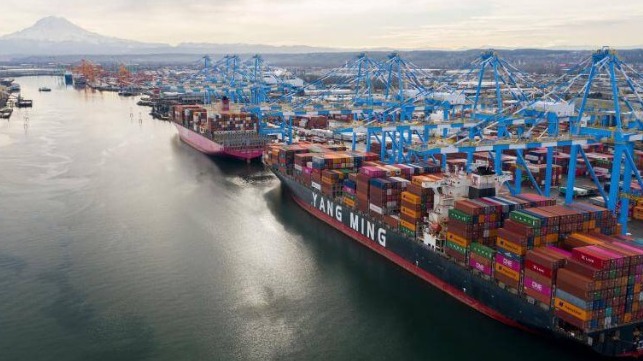Canada Significantly Out Investing U.S. for Port Infrastructure

The celebration of the signing of the U.S. infrastructure legislation into law today in Washington, D.C., is seen as a critical step but according to a research report from U.S. West Coast ports maybe be just catching up to foreign competition. The bill, which is being valued at $1.2 trillion includes important elements for U.S. ports, although some of the projects for roads, bridges airports, and Wi-Fi are far more visible and gaining attention.
In announcing the results of the study commissioned by the ports of Washington state and California, the Northwest Seaport Alliance contends that current federal levels of investment in infrastructure are insufficient to build the freight system the U.S. needs today and in the coming decades. The report says investments in the ports and supporting infrastructure are critical to maintaining U.S. competitiveness.
"The important role seaports play in the nation's economy has never been more visible than it is today, during the global pandemic," said Port of Long Beach Executive Director Mario Cordero, one of the sponsors of the report. "The West Coast is the gateway to Asia and the country's most prominent trade partners. A more equitable distribution of federal funding would make all our operations faster and more efficient, with tremendous benefits up and down the supply chain."
Among the key findings of the report is that Canadian ports have received more than double the federal funding levels compared to U.S. West Coast ports. They highlight that ports in British Columbia have been successful in competing against Washington and California to attract container traffic. They believe that competition will continue to increase, especially in light of the publicity over the backlogs at U.S. ports.
They contend that the Canadian federal government is treating its West Coast ports as a national priority. The contributions coming from the Canadian federal government to support port projects in British Columbia are “substantially exceeding U.S. grants to Washington and California over the past five years.”
“The Canadian government has made their British Columbia ports a national priority and unfortunately U.S. west coast ports have seen market share slowly shift north to Canada,” stated NWSA Co-Chair and Port of Tacoma Commissioner President Dick Marzano. “More infrastructure funding from the U.S. federal government means that we can move more cargo and support more family-wage jobs across our region.”
According to the report, from 2016 to 2020, ports in British Columbia received $372 million in direct port project funding compared with just $45 million for Washington state ports and $179 million for California ports.
Beyond port-specific projects, the report also cites road and rail infrastructure that supports the efficient movement of goods throughout the supply chain saying that they are also receiving significantly fewer federal dollars than Canadian investments. The study reports that from 2005 to 2020 federal contributions to port-related projects total $1.332 billion in British Columbia compared to $457 million for Washington projects.
They concluded that the U.S. government needs to focus support critical infrastructure such as road, rail, highway, and bridge improvements to help the growth in U.S. commerce.
